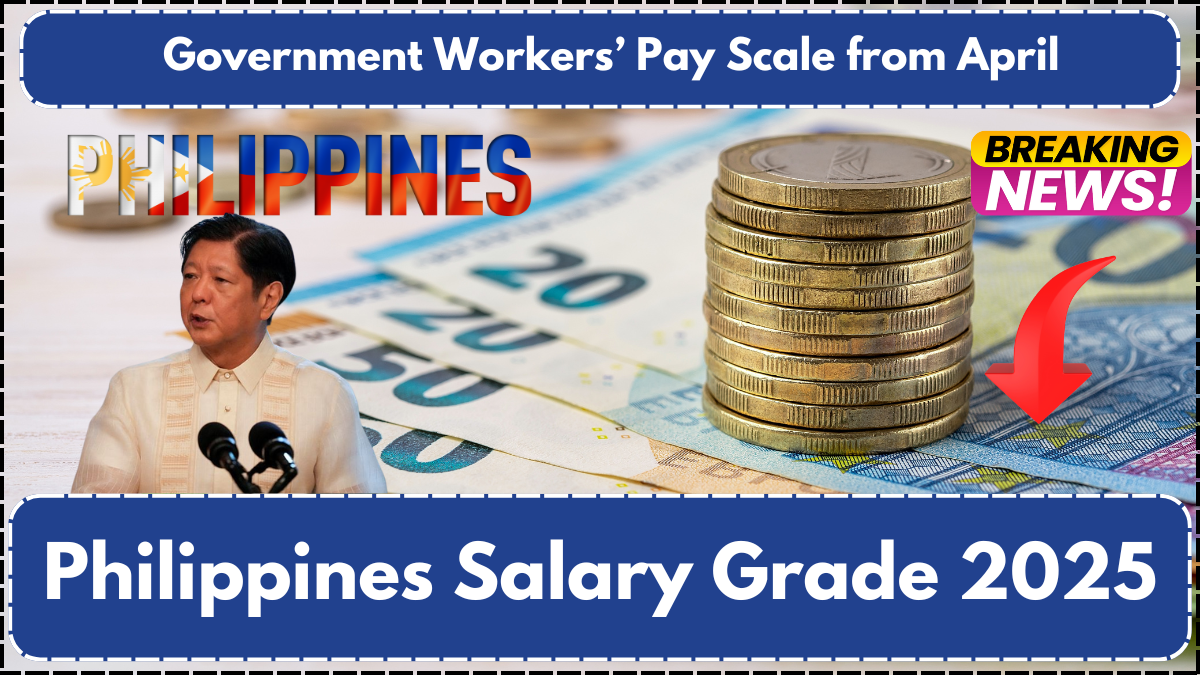The Philippine government continues to implement improvements in public sector wages through the Salary Standardization Law VI (SSL VI). By 2025, the law will be in its second year, bringing further salary adjustments for government employees, particularly those in Salary Grades 1 to 11. These changes aim to align public sector wages more competitively with the private sector while addressing inflation and the rising cost of living.

Understanding SSL VI and Its Objectives
SSL VI is a four-year salary adjustment program spanning from 2024 to 2027. The primary goals of this initiative are:
- Establishing a fair and transparent compensation structure for government employees.
- Aligning public sector salaries with private sector standards to attract and retain skilled professionals.
- Providing competitive salaries that reward competence, loyalty, and service performance.
By implementing salary increments in multiple tranches, the government ensures a structured and sustainable wage reform plan. The 2025 salary increases represent the second stage of this ongoing reform.
April 2025 Salary Adjustments for Salary Grades 1 to 11
Effective April 2025, government employees within Salary Grades 1 to 11 will receive further wage increases. Below is an overview of the salary adjustments at Step 1 for each grade:
| Salary Grade | 2024 Salary (PHP) | 2025 Adjusted Salary (PHP) |
|---|---|---|
| 1 | 13,530 | 14,061 |
| 2 | 13,814 | 14,347 |
| 3 | 14,125 | 14,661 |
| 4 | 14,456 | 15,004 |
| 5 | 15,909 | 16,488 |
| 6 | 17,553 | 18,171 |
| 7 | 18,620 | 19,270 |
| 8 | 19,744 | 20,427 |
| 9 | 21,129 | 21,847 |
| 10 | 22,450 | 23,204 |
| 11 | 29,798 | 30,024 |
Each salary grade consists of eight step increments based on tenure and merit-based advancements. This system rewards employees for both their experience and contributions to public service.
Additional Allowances and Benefits in 2025
Beyond the basic salary increase, government employees are entitled to several allowances to enhance their well-being and professional needs. These include:
- Medical Allowance: PHP 7,000 annually to support healthcare expenses.
- Clothing Allowance: PHP 7,000 to assist with maintaining a professional appearance.
These benefits aim to ensure that employees can manage both personal welfare and work-related expenses more effectively.
Performance-Based Incentives for Government Employees
To promote efficiency and excellence in government service, SSL VI includes incentives tied to employee performance:
- Performance-Based Bonus (PBB): Employees meeting or exceeding performance indicators are eligible for additional financial rewards.
- Collective Negotiation Agreement (CNA) Incentive: Granted to employees covered under collective bargaining agreements contributing to organizational efficiency and productivity.
These incentives foster a results-driven work environment, encouraging employees to strive for excellence in public service.
Implementation in Local Government Units (LGUs)
While national government employees benefit uniformly from salary adjustments, LGUs implement these changes based on their financial capacity. The salary increase distribution among LGUs is as follows:
- First-Class Provinces: Implement salary increases at 100%.
- Second-Class Provinces: Implement approximately 95% of the adjustments.
- Third-Class Municipalities: Implement around 85% of the prescribed increases.
- Fourth-Class Municipalities: Implement approximately 80% of the adjustments.
This flexible approach ensures that salary adjustments align with each LGU’s fiscal resources while upholding wage reform objectives.
Funding and Long-Term Sustainability
The national government, through the Department of Budget and Management (DBM), has allocated the necessary funds to cover the 2025 salary increases. The government remains committed to ensuring the sustainability of the program by aligning it with broader economic and fiscal policies.
By maintaining financial discipline and aligning compensation reforms with national economic goals, SSL VI remains a viable and impactful wage reform initiative.
Frequently Asked Questions (FAQs)
1. What is the purpose of SSL VI?
SSL VI aims to establish a fair and transparent pay structure for government employees, making public sector wages more competitive while recognizing employee performance and service tenure.
2. When will the second tranche of SSL VI take effect?
The second tranche will be implemented in April 2025, providing salary increases for government employees, particularly those in Salary Grades 1 to 11.
3. How are the salary increases structured?
Salary adjustments follow a step-based structure, where employees move through eight step increments within their salary grade based on tenure and performance.
4. Do LGU employees receive the same salary increases?
LGU employees also receive salary increases, but the extent of implementation depends on the financial capacity of their respective LGUs.
5. What allowances are included in the 2025 salary adjustments?
Government employees will receive a PHP 7,000 medical allowance and a PHP 7,000 clothing allowance in addition to their adjusted salaries.
6. Are there incentives for high-performing employees?
Yes, employees may qualify for Performance-Based Bonuses (PBB) and Collective Negotiation Agreement (CNA) Incentives based on their contributions to organizational efficiency.
7. How is SSL VI funded?
The salary increases are funded through the national budget, with the Department of Budget and Management ensuring appropriate allocation and sustainability of the program.
By implementing SSL VI, the Philippine government is taking significant steps toward a more competitive, fair, and sustainable compensation structure for its employees. These reforms aim to enhance public service efficiency, retain talent, and improve overall employee welfare.
For More Information Click Here
Akesh is a furniture expert with years of experience in design and craftsmanship. Specializing in sustainable materials, he shares his expertise to help people create stylish and functional living spaces.
